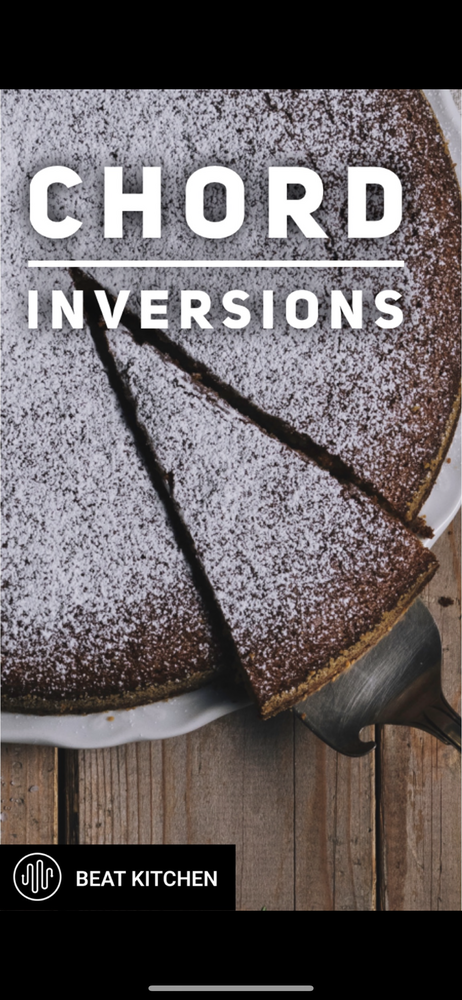The easiest way to start understanding chord inversions is to think of it like a cake with three ingredients. A basic chord has three components. The root, the third, and the fifth.
Take this C chord. It’s C, E, M, G. If this was a cake and this was butter, flour, and sugar, it wouldn’t matter if I put the butter up here.
I would have flour, sugar, butter. Still a C chord. And if I put the flour up here, still a C chord.
It’s just sugar, butter, flour. A three-note chord has three basic positions. One key to learning them is to watch the spacing change.
In the root position, the spacing is even. In the first inversion, two and then one. In the second inversion, one and two.
Third inversion of a three-note chord, we’re back where we started. Root position. Learning chord inversions is going to help you get from one chord to another.
Joining a Beat Kitchen class, that’s going to help you learn to make your own bops.

